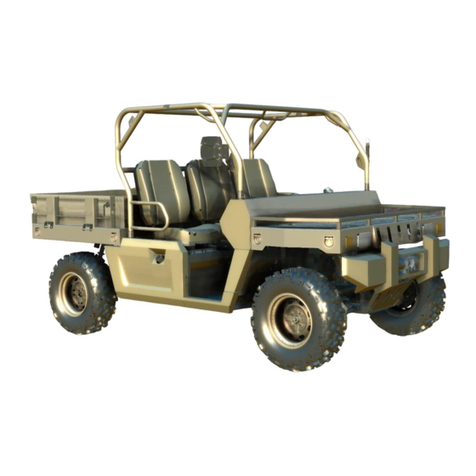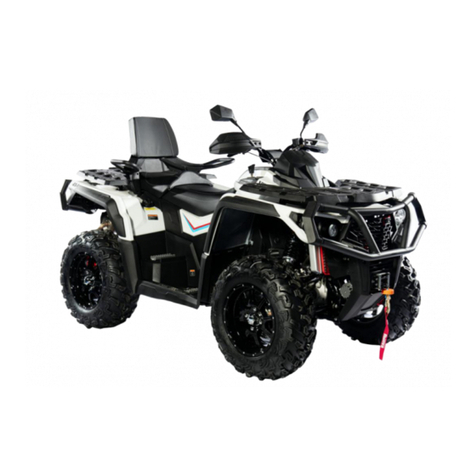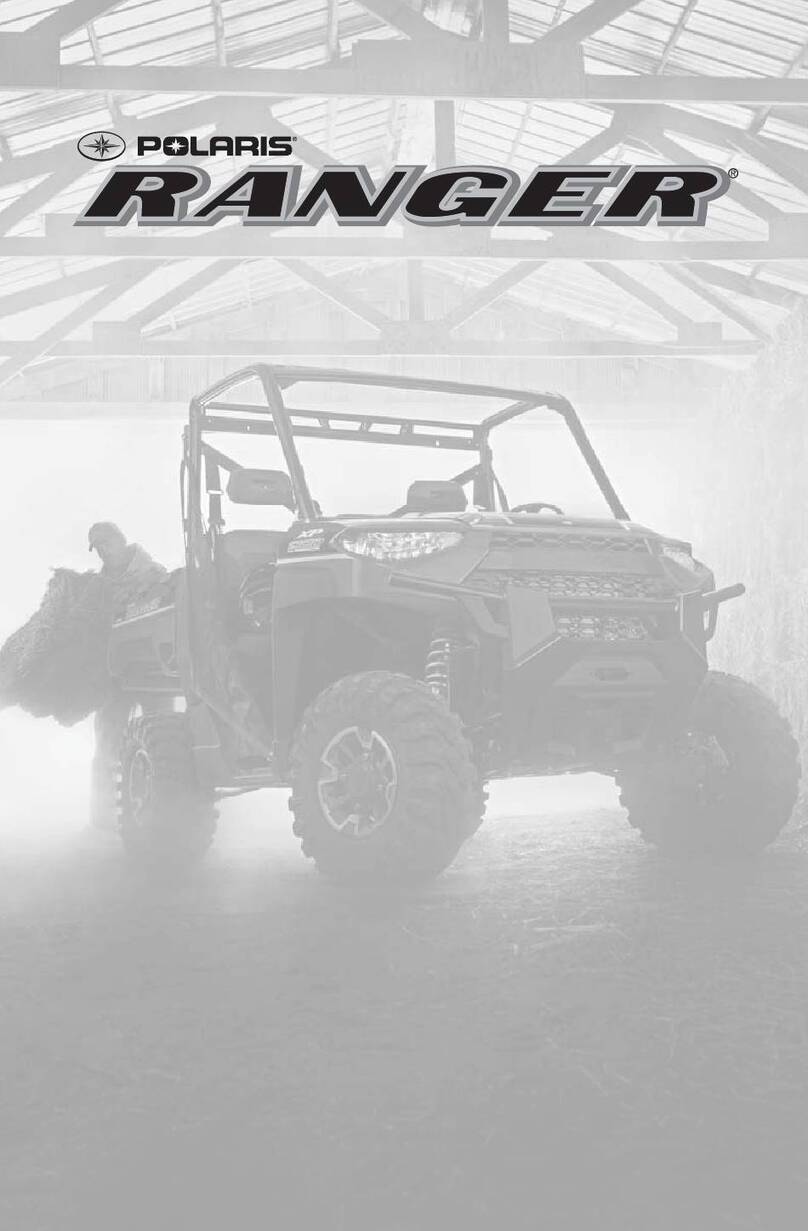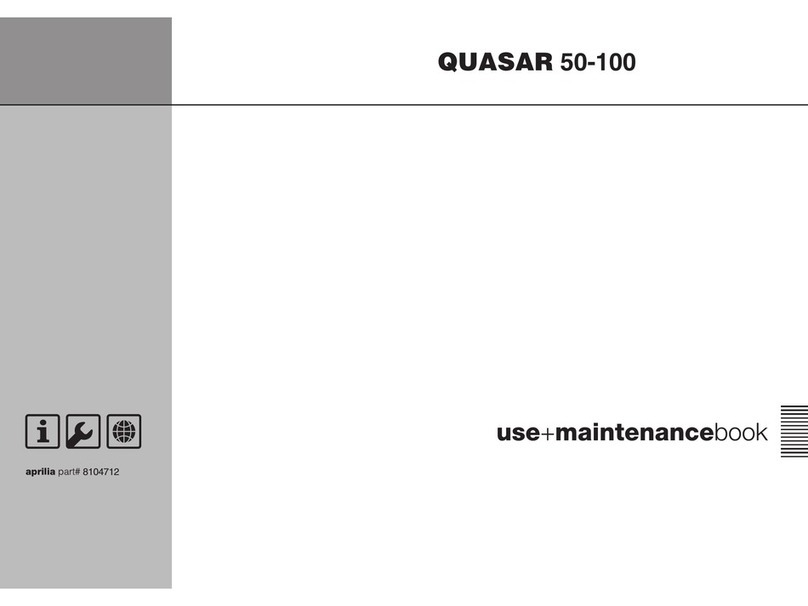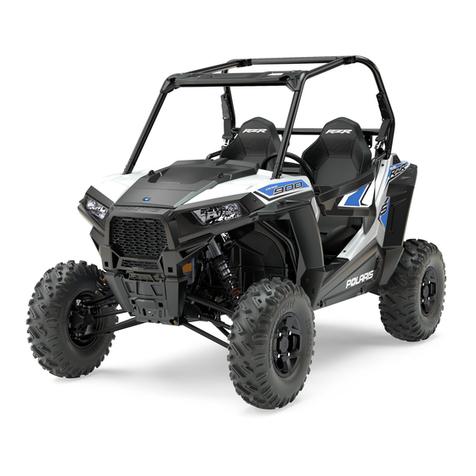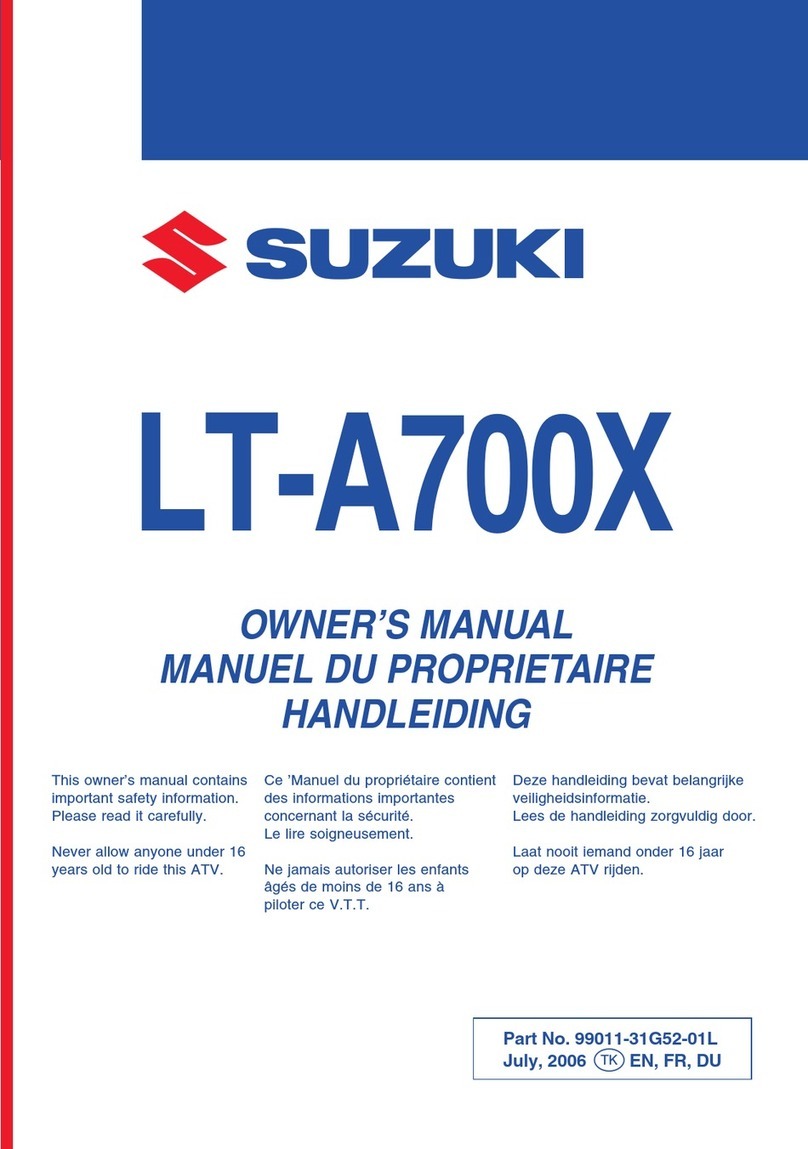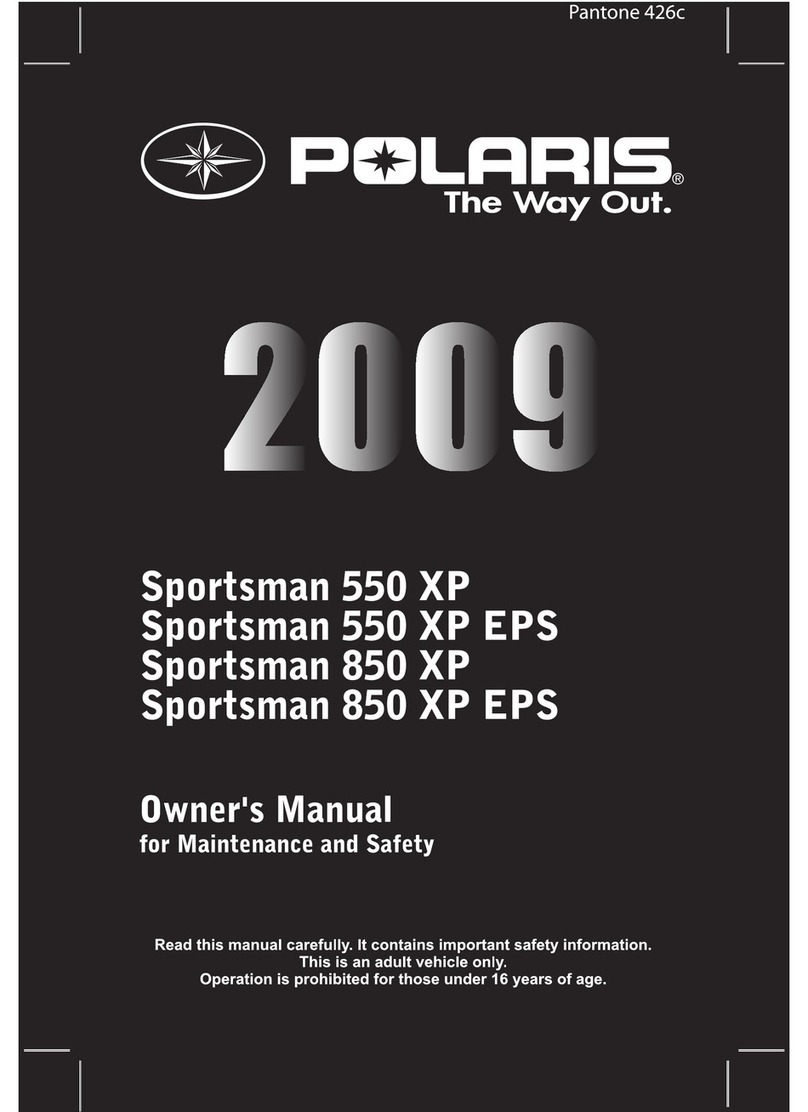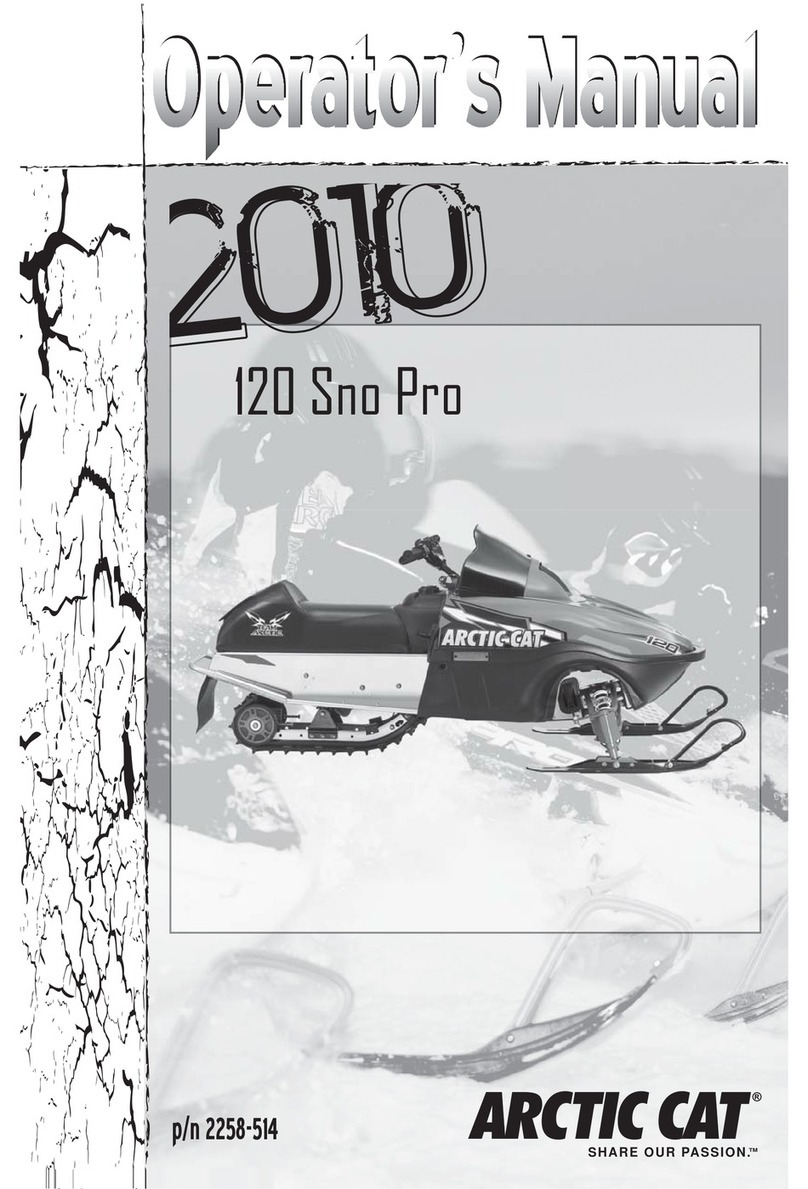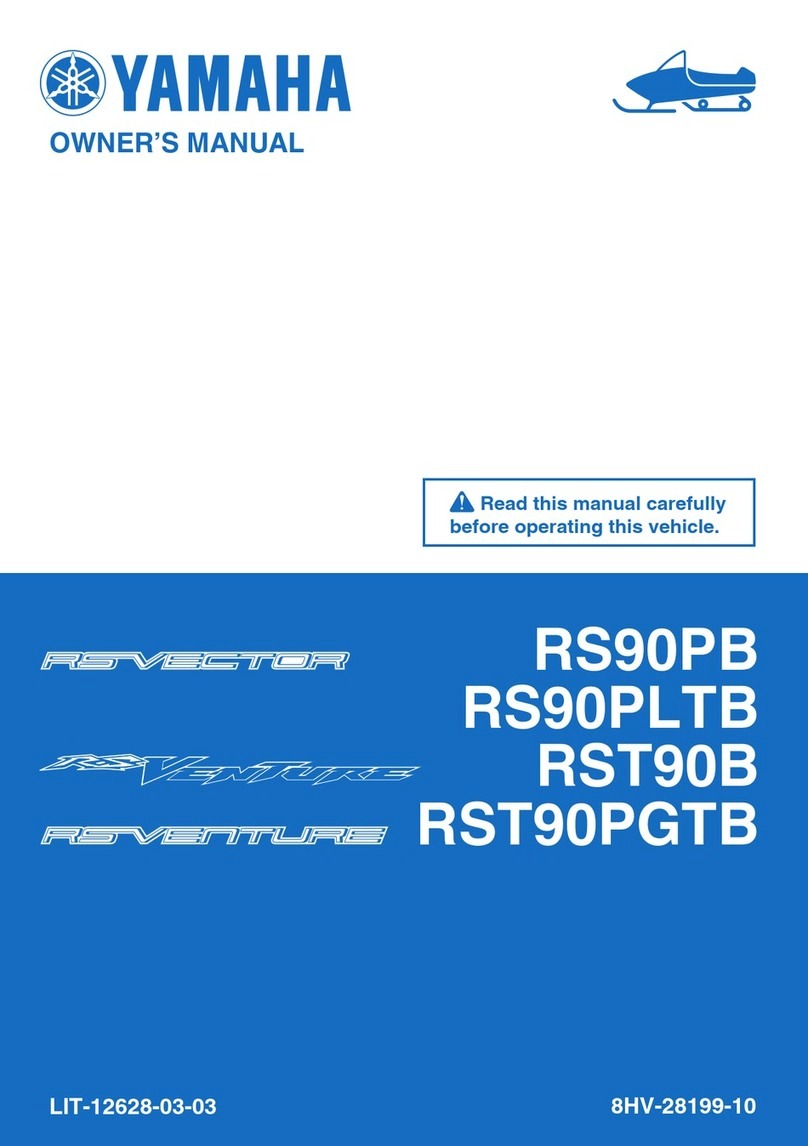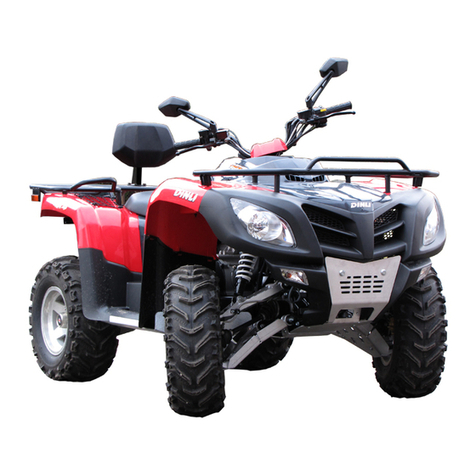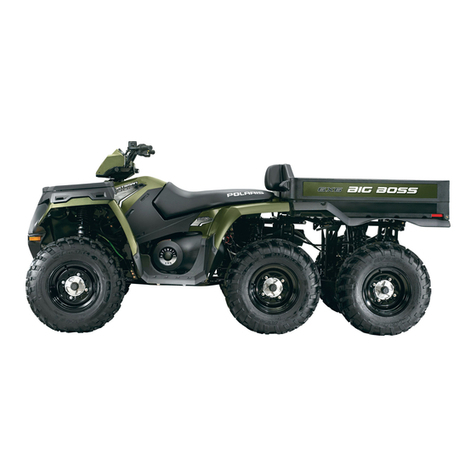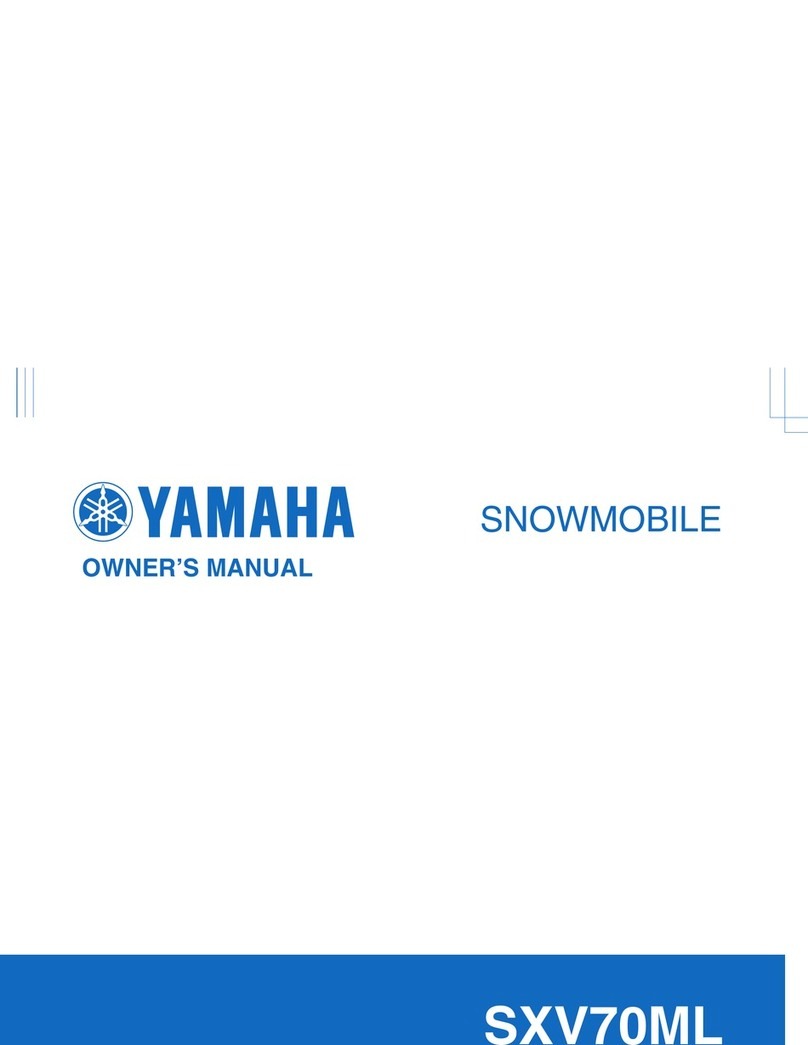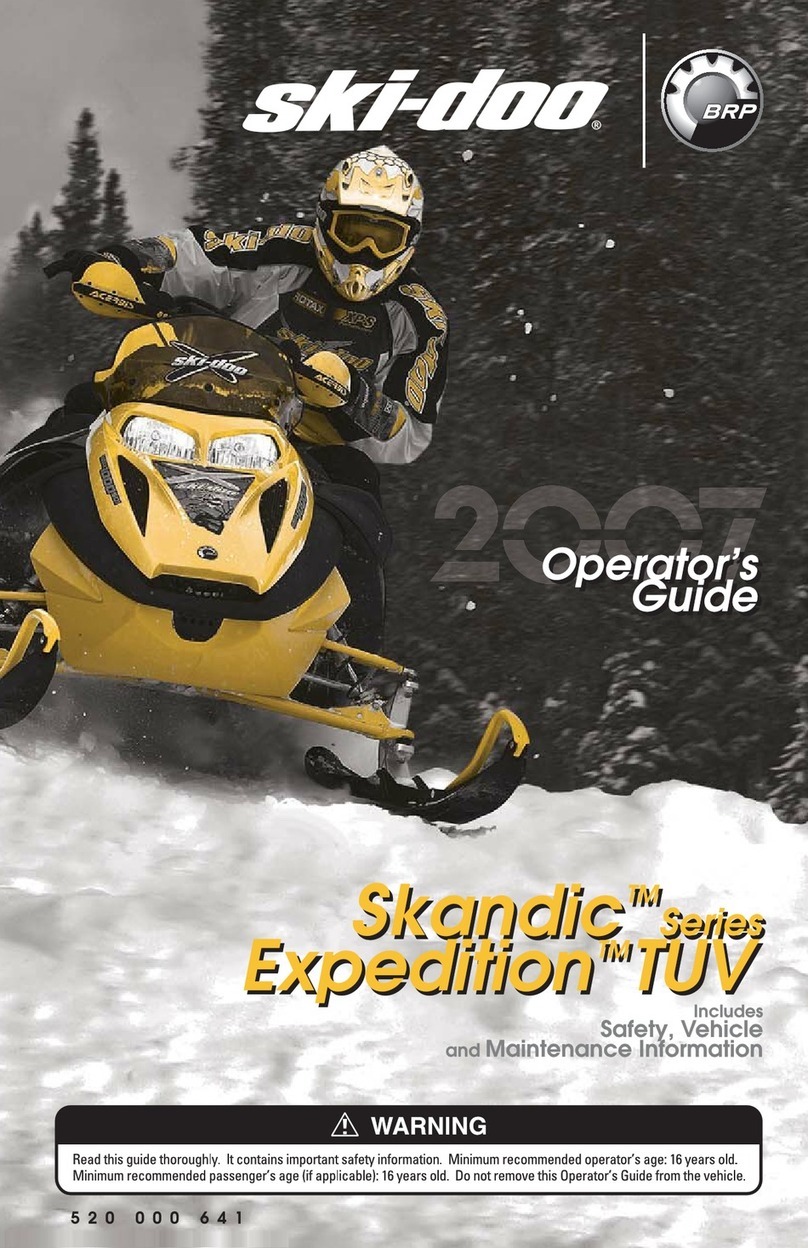ODES UTV Series User manual

- 1 -
WARNING
● Operation of children under the age of 16 may increase the risk of severe
injury or death!!! Drive properly for not sliding!!!!
● Adult supervision is always required.
● Children under the age of 16 may NOT operate this UTV.
● Overloading may affect the handling of the vehicle.
● Operator use only, Excess passengers prohibited.
● This vehicle is designed and manufactured for OFF-ROAD use only.
● Driving Off Road Vehicles on public streets, roads, or highways is illegal.
● All Riders MUST wear helmet and other protective equipment.
● Do NOT operate this vehicle during/after consuming Alcohol or Drugs.
● Don’t do drugs. It’s not healthy for you.
● When refueling, you must shut off the engine to avoid spark or fire risk.
● Read owner's manual carefully before operating this vehicle.

- 2 -
INTRODUCTION
Dear Valued ODES Customer,
Congratulations and thank you for choosing to become apart of our ODES
family with the purchase of your new UTV. We have designed this vehicle for
you, the customer in mind, providing you with great power, stability, and
functionality with your UTV. This UTV was designed for OFF Road use only.
This Operator’s Manual is here to familiarize any operators of all proper
operating procedures. It also includes important and required information
about the general care and maintenance of your ODES UTV.
Read the following pages regarding safety warnings, active riding skills, and
precautions for your own safety and the safety of others around you.
Children and adults have different skill levels, physical abilities, and use of
judgment. Anyone under the age of 16 is NOT permitted to drive this vehicle.
Parents should always supervise their child’s (anyone over 16) use of this
UTV at all times.
All information in this manual is based on the latest product data and
specifications available at the time of printing. ODES, the Manufacturer of
this UTV, reserves the right to make product changes and improvements,
which may affect the illustrations, layout, or explanations without notice.
If you have any other questions regarding our UTV’s operation or
maintenance, please contact any authorized dealer.
Product and specifications are subject to change without notice.

- 3 -
Important safety information
Your UTV can provide many years of service and fun if you take
responsibility for your own safety, others around you, and understand the
challenges you can meet while riding. Throughout this owner’s manual, you
will find many helpful recommendations to protect yourself and others while
riding. The followings are most important.
Follow the age recommendation
The minimum recommended age of this UTV model is 16 years. Children
under the age of 16 are NOT permitted to operate this vehicle.
Always wear a helmet
It is a proved fact that helmets significantly reduce the number and severity
of head injuries and or death. So always wear protective head gear while
operating this vehicle! We also recommend wearing protective boots, gloves,
and other protective gear.
Off-road use only
Your UTV is designed for OFF-ROAD use only. The tires are not made for
pavement, and the UTV does not meet the specifications required for use on
public roads.
Take time to learn & practice
Even if you have ridden other UTVs, take the time to become familiar with
your skills and get accustomed to the size and weight of this vehicle.
Because many accidents involve inexperienced or untrained riders, we
recommend all riders to take a training course approved by the UTV safety
institute.
Contact an authorized UTV dealer to find out about training courses near
you.
Be alert for off-road hazards
The terrain can present a variety of challenges when you ride off-road.
Continually “read” the terrain for unexpected turns, drop-offs, rocks, ruts, and
other hazards. Always keep speed low enough to allow you have time to see

- 4 -
and react to hazards.
Ride within your limits
Pushing limits is another major cause of UTV accidents. Never attempt to
ride beyond your personal abilities or faster than conditions warrant.
Don’t drink and ride
Riding after drinking can also cause potentially fatal accidents. Do not
operate this vehicle if you have consumed any alcohol. Just one drink can
prevent you from reacting in enough time to your changing surroundings.
Keep your UTV maintained
It is important to keep your UTV properly maintained and in safe riding
condition. To help avoid having a breakdown, inspect your vehicle before
each ride and keep it maintained. This unit comes with labels and a hangtag
containing important safety information. Make sure anyone who rides this
vehicle reads and fully understands its contents before riding. These labels
should be considered permanent parts of this UTV. If one comes off or
becomes hard to read, contact an authorized dealer to have them replaced.

- 5 -
GUIDELINES FOR SAFE DRIVING
1. Reduce speed when approaching any turns, hills, or bends. Once you
have fully turned, gradually increase speed.
2. Be careful when passing any vehicle in front of you.
3. Check the brakes each time you ride to ensure they have not been cut
during off-road riding or they are too soft for full stopping capacity.
4. During riding, the vibration can loosen the bolts. Before each ride, take
time to inspect that all bolts are tightened.
For training please call ASI at 1-800-887-2887

TABLE OF CONTENTS
- 6 -
Introduction……………………………………………………………………
7
Safety…………………………………………………... ……………………
11
Features and Controls………………………………. ………………………
16
Operation………………………………………………………………………
29
Emission Control Systems…………………………………………………
45
Maintenance…………………………………………...……………...………
46
Specifications………………………………………………………... ………
84
Troubleshooting……………………………………………………...………
86
Maintenance Log…………………………………….. ……………..………
90
Index……………………………………………………. ……………...……
91

INTRODUCTION
- 7 -
INTRODUCTION
This manual will provide you with a good basic understanding of the features
and operation of this vehicle. It also includes basic maintenance and
inspection procedures. If you have any questions regarding the operation or
maintenance of your vehicle, please contact your dealer.
!WARNING
Please read this manual carefully before operating this vehicle. Do not
attempt to operate this vehicle until you have attained adequate knowledge of
its controls and operating features. Regular inspections and careful
maintenance will help ensure that you safely enjoy the capabilities and
reliability of this vehicle.

INTRODUCTION
- 8 -
IMPORTANT MANUAL INFORMATION
FAILURE TO COMPLY WITH THE WARNINGS CONTAINED IN THIS
MANUAL CAN RESULT IN SERIOUS INJURY OR DEATH.
Particularly important information is distinguished in this manual by
the following notations:
!
ATTENTION!
The Safety Alert Symbol means BECOME ALERT!
YOUR SAFETY IS INVOLVED!
! WARNING:
Failure to follow WARNING instructions could
result in severe injury or death to the vehicle
operator, a bystander or a person inspecting or
repairing the vehicle.
CAUTION:
CAUTION indicates special precautions that must
be taken to avoid damage to the vehicle.
NOTE:
NOTE provides key information to make
procedures easier or clearer.
*Product and specifications are subject to change without notice.

INTRODUCTION
- 9 -
IMPORTANT NOTICE
● This vehicle is designed and manufactured for off-road use only. It is
prohibited by the law to operate this vehicle on any public street, road, or
highway.
● Check the laws and regulations in your state before choosing where to
operate this vehicle. It is illegal to operate this vehicle on public lands
where certain vehicle sizes are prohibited.
● This vehicle complies with most state off-highway noise level and spark
arrester laws and regulations.

INTRODUCTION
- 10 -
Vehicle Identification Numbers
Record your vehicle's identification numbers and key number in the spaces
provided. Remove the spare key and store it in a safe place. An ignition key
can be duplicated only by ordering a Yours key blank and mating it with one
of your existing keys.
The ignition switch must be replaced if all keys are lost.
Vehicle Model Number:
Vehicle Identification Number:
Engine Serial Number:
Vehicle Identification Number
(Right front wheel well)
Engine Serial Number
(Under the back cover)
This manual suits for next models
2
Table of contents
Other ODES Offroad Vehicle manuals
